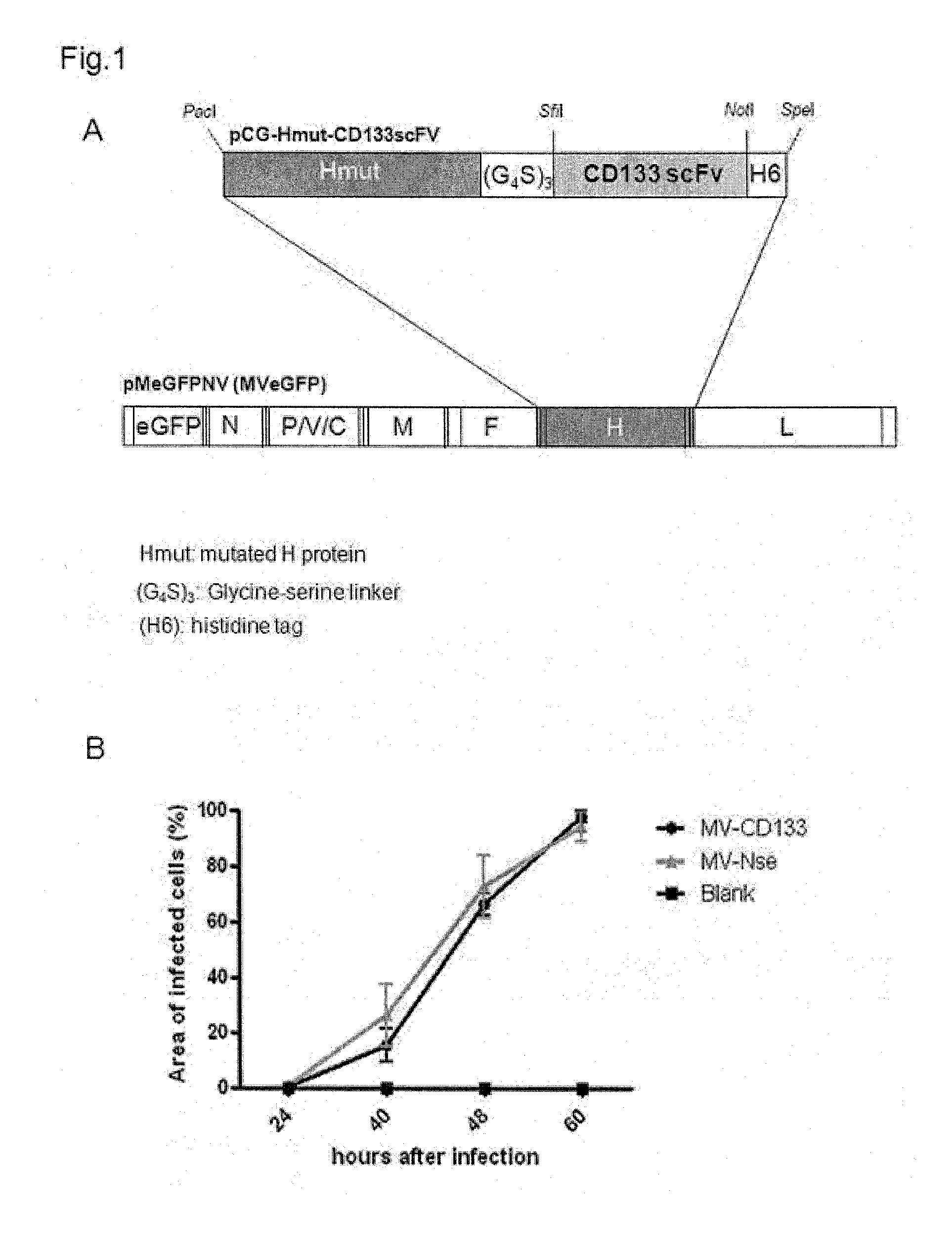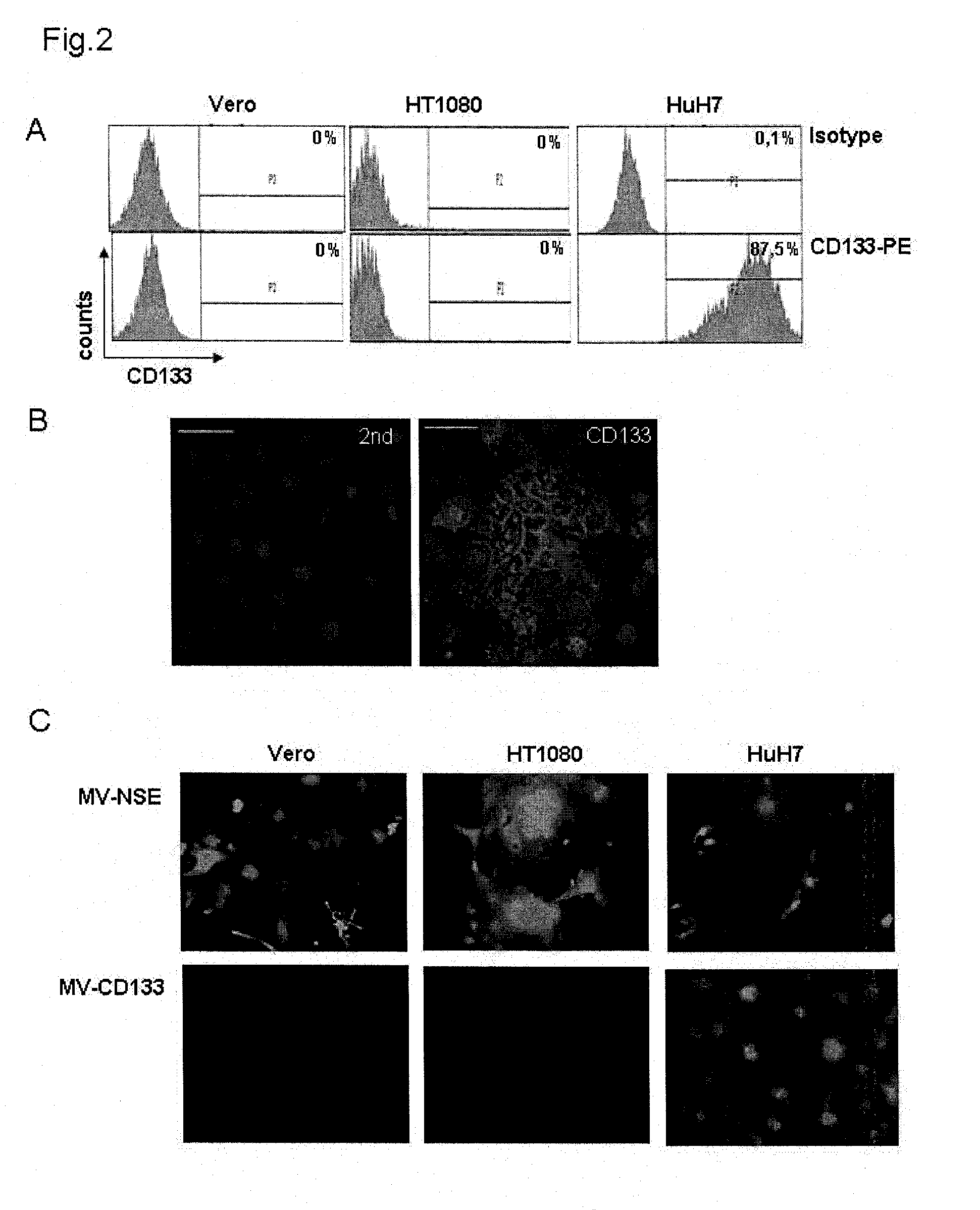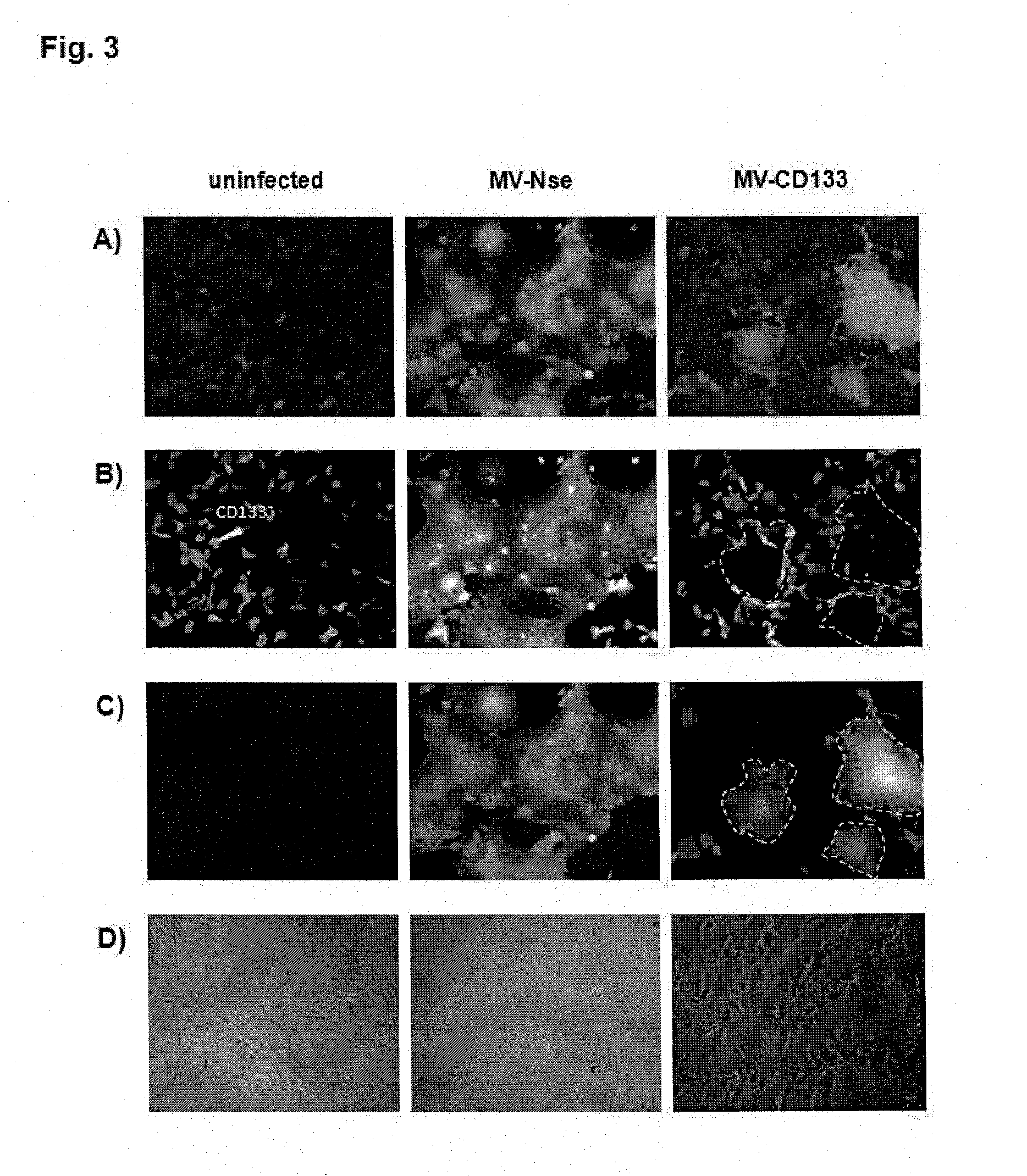Enhanced tumor therapy by tumor stem cell targeted oncolytic viruses
a tumor stem cell and tumor technology, applied in the field of recombinant oncolytic viruses, can solve the problems that many types of cancer are still uncurable, and achieve the effect of improving the safety and efficacy of oncolytic viruses and enhancing the therapeutic
- Summary
- Abstract
- Description
- Claims
- Application Information
AI Technical Summary
Benefits of technology
Problems solved by technology
Method used
Image
Examples
example 1
Isolation and Cloning of CD133 Specific scFv and Production of Recombinant Measles Virus
[0038]For the generation of MV-CD133, RNA prepared from the AC141.7 antibody producing hybridoma HB-12346 generated as described in Yin et al., Blood, 90: 5002-5012.1997 was reverse-transcribed to amplify the IgG variable coding regions of heavy and light chains. A degenerated primer mix (Heavy Primer Mix, #27-1586-01; Light Primer Mix, #27-1583-01; GE Healthcare) was used for reverse transcription-PCR. The resulting PCR fragments were subcloned into the pJET1.2 / blunt cloning vector (Fermentas) and then amplified to insert coding sequences for SfiI and NotI restriction sites and the (G4S)3-linker using CD133-VH and CD133-VL primer listed in Table 1. The resulting PCR fragments encoding the heavy or light chains were digested with TauI and SfiI, or TauI and NotI, respectively, and inserted by triple ligation into a SfiI and NotI-digested pCG-Hmut backbone resulting in pCG-Hmut-CD133scFv now encodi...
example 2
Verification of Tumor Stem Cell Selectivity
[0041]HuH7, Vero or HT1080 cells were tested for CD133 expression by flow cytometry applying anti-human CD133 / 1-PE antibody (clone AC133, Miltenyi). Appropriate isotype controls were used according to the manufacturer's instructions.
[0042]90% of HuH7 cells were CD133 positive whereas HT1080 and Vero cells were CD133 negative (FIG. 2A).
[0043]CD133 expression of HuH7 cells was confirmed by immunofluorescence staining using a mouse anti-human CD133 as primary antibody and a donkey anti-mouse IgG Cy3 (Dianova) secondary antibody (FIG. 2B).
[0044]HuH7, Vero and HT1080 cells (1×104 cells / 24-well plate) were incubated with MV-CD133 or MV-Nse at an MOI of 1 in Opti-MEM at 37° C. At 72 hours after infection, cells were analysed by fluorescent microscopy. While MV-Nse infected all cell types, MV-CD133 infected only the CD133-positive HuH7 cells. Vero and HT1080 cells that are CD133-negative were not infected with MV-CD133 (FIG. 2C). Thus, MV-CD133 is ...
example 3
Specific Infection of CD133+ Cells by MV-CD133 in Cultures of Mixed CD133+ and CD133− Cells
[0045]The target specificity of MV-CD133 was further determined in a cocultivation experiment of CD133+ cells (HT1080 cells genetically modified to express CD133) and CD133− cells (wild-type IT1080 cells). To distinguish between both cell types CD133 cells were genetically modified to express the red fluorescent protein (RFP). Thus, if these cells (HT1080) become infected with a GFP encoding measles virus they will turn yellow while the CD133+ cells (HT1080-CD133) will turn green. Both cell types were mixed in a 1:1 ratio and infected with MV-CD133 or MV-Nse at an MOT of 0.5, respectively. While MV-CD133 infected HT1080-CD133 cells only (FIG. 3A, right panel), MV-Nse infected both cell types resulting in yellow signals (FIG. 3A central panel). In FIG. 3A of the microscopic pictures both colour channels are shown in overlay, in FIG. 3B-C the GFP (C) and RFP (B) channels are shown separately, to...
PUM
 Login to View More
Login to View More Abstract
Description
Claims
Application Information
 Login to View More
Login to View More - R&D
- Intellectual Property
- Life Sciences
- Materials
- Tech Scout
- Unparalleled Data Quality
- Higher Quality Content
- 60% Fewer Hallucinations
Browse by: Latest US Patents, China's latest patents, Technical Efficacy Thesaurus, Application Domain, Technology Topic, Popular Technical Reports.
© 2025 PatSnap. All rights reserved.Legal|Privacy policy|Modern Slavery Act Transparency Statement|Sitemap|About US| Contact US: help@patsnap.com



